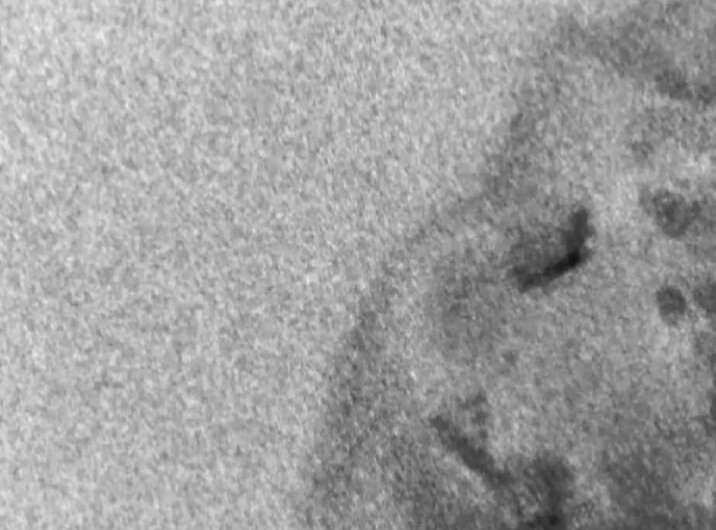Catching atoms in action: watching next-gen materials crystallize

One of the many possible routes to next-gen materials— ones that enable new advances in data storage, electronic devices, and lighter and stronger structural building materials— is through supercooling of metals into a category of alloys called 'metallic glass,' with no regular or crystalline pattern of atomic structure (scientists call it "amorphous"). Unlike common or window glass, however, these metallic glasses are excellent electrical conductors, making them promising for all sorts of tech applications.
When metallic glass is heated at much lower temperature than its melting point, unpredictable new states of matter pop up. Some of these unusual materials structures contain small islands or fragments of crystallized solids, ones that could have potentially useful properties.
"The challenge is understanding how these alloys form, and how we can control their formation under these conditions; no existing models can predict their existence due to the great variations of atomic mobility at different temperatures," said Lin Zhou, a scientist at the U.S. Department of Energy's Ames Laboratory. "Experimental measurements of the transition pathway are critical to establish reliable models to overcome this challenge. That will be the key to making these materials in a controlled way, with exactly the properties we want to have."
Experts in capturing atomic-level details of complex materials transformations, Zhou and other scientists in Ames Laboratory's Division of Materials Sciences and Engineering melted, super-cooled and then reheated a model alloy of aluminum and samarium, and monitored the reheating process in real time with a combination of high-energy X-ray diffraction and transmission electron microscopy.
The videos captured slow-growing, irregularly-placed crescent nanocrystals of aluminum, which are engulfed in the faster-forming complex intermetallic from the glassy metal, a process called devitrification. These abnormal results were surprising, but helped to explain some confusing results from previous experiments.
"Previously, we would draw conclusions by comparing still images before and after transformation with theoretical models," said Zhou. "With these techniques we have much more precise information to explain these transformations."
The research is further discussed in the paper, "An abnormal meta-stable nanoscale eutectic reaction revealed by in-situ observations," authored by Lin Zhou, Fanqiang Meng, Shihuai Zhou, Kewei Sun, TaeHoon Kim, Ryan Ott, Ralph Napolitano, and Matthew J. Kramer; and published in Acta Materialia.
More information: Lin Zhou et al. An abnormal meta-stable nanoscale eutectic reaction revealed by in-situ observations, Acta Materialia (2018). DOI: 10.1016/j.actamat.2018.11.027
Provided by Ames Laboratory




















